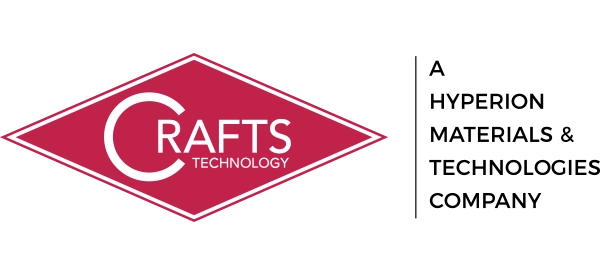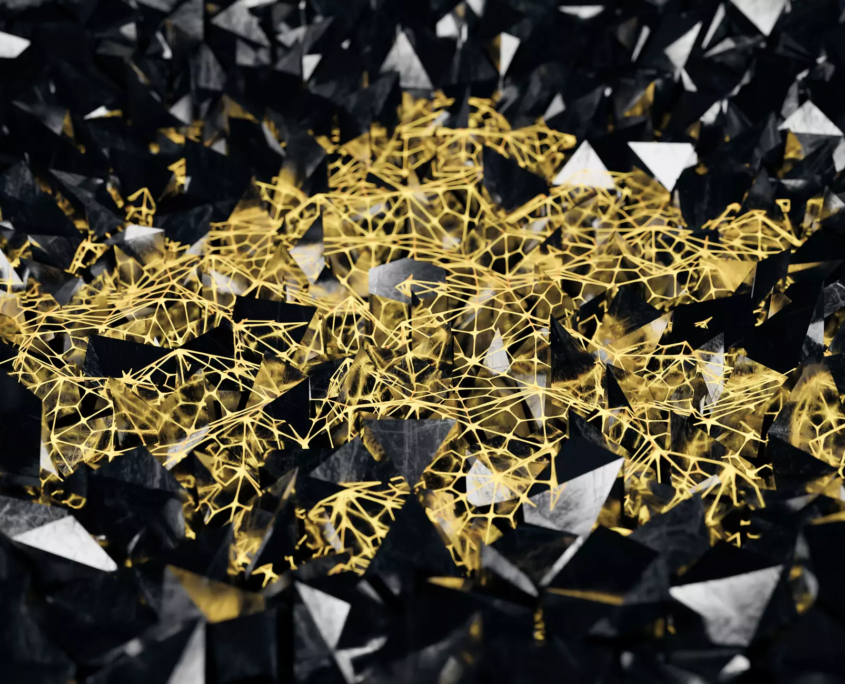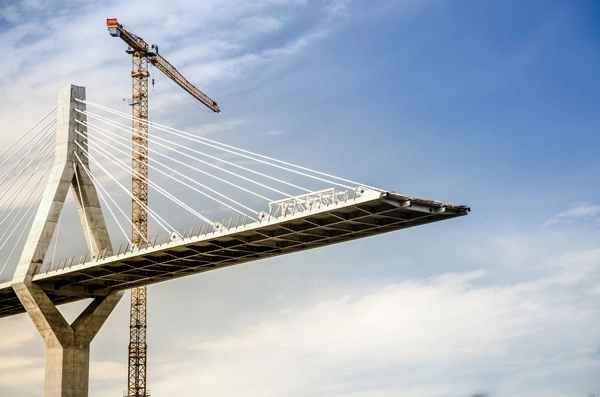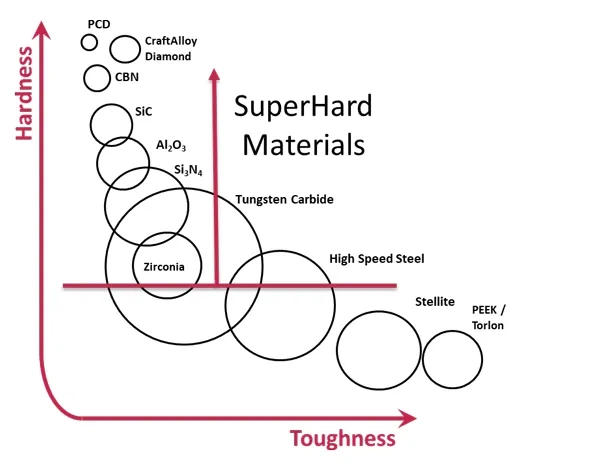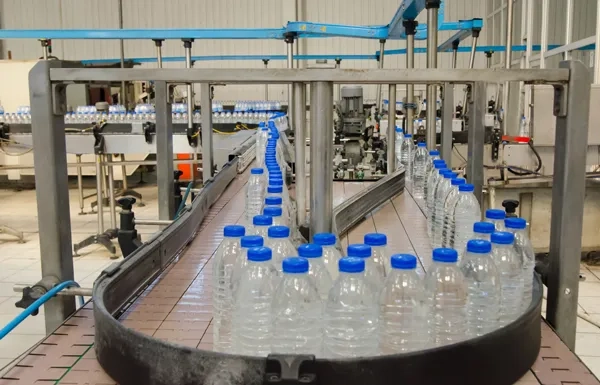SuperHard Materials: Harnessing the Hardest Materials on Earth to Advance Your Industrial Equipment
SuperHard Materials: Harnessing the Hardest Materials on Earth to Advance Industrial Equipment
SuperHard materials are some of the most underutilized materials within industrial environments. These materials may be an untapped avenue towards substantial advancements in equipment performance and noteworthy reductions in the total cost of ownership (TCO).
The strategic application of SuperHard materials often provides for an opportunity to achieve substantial benefits in the enhancement of industrial equipment. Our motivation at Crafts Technology is to assist you in the enhancement of your equipment capability and/or performance. We do that through sharing our knowledge and experience and in a way that will help to improve upon the effectiveness of your designs.
The purpose of this article is to assist the reader by helping the reader to further develop a top-level understanding of SuperHard materials. This improved understanding can help to fuel creativity and spark additional ideas, which typically leads to applying SuperHard materials in a way that will enhance the performance of industrial equipment.
SuperHard materials … sounds cool, but what are they?
SuperHard is a non-engineering (general) term that is often used to differentiate one group of materials from another group. At Crafts Technology, we use SuperHard to describe materials above a certain level of hardness. This level of hardness is generally above a point where traditional machining methods, such as a milling and turning, cannot be utilized to produce the components.
These SuperHard materials include diamond, silicon carbide, silicon nitride, tungsten carbide, and high-speed steel, to name just a few.
In general, the engineering curricula at academic institutions often does not provide enough detail to more effectively aid users in the application of SuperHard materials. Most of the focus tends to be on the most commonly utilized materials such as steel, iron, plastic, etc… However, when an engineer, technician and other technical personnel are able to design components and systems that more effectively harness the key advantages of SuperHard materials, there is a corresponding opportunity to revolutionize the uptime and performance of industrial equipment.
The integration of SuperHard materials into your design can be the critical enhancement that differentiates your equipment from the competition. When your competitors do not have the knowledge or experience to effectively harness these SuperHard materials, their equipment can possess increased downtime and reduced performance.
With the right knowledge of these SuperHard materials, you can design your systems and components to leverage the unique properties of these materials for the betterment of your equipment. This strategic use allows a new standard to be developed for uptime and performance that competitors in your market will not be able to match.
The best way to begin discussing SuperHard materials is through the material property of hardness. Get it?… SuperHard = Super Hardness.
Hardness is the leading material property that protects against wear. The higher the hardness of a material, the greater the ability of the material to stand up to repeated friction.
Imagine a rock in a river. That rock withstands many decades of water rushing over it but eventually the rock wears down, and through the wearing of many rocks, a canyon forms. If those same rocks were made of, let’s say, StyrofoamTM (yes, the Styrofoam balls you see at hobby stores) the Styrofoam would easily dissolve from the rushing water, almost immediately. This difference in time (rocks = years compared to Styrofoam = seconds) of breaking down is the difference in the wear life of those materials.
The yin to hardness’s yang is toughness. Toughness is a material’s ability to survive impact. It is a combination of a few material properties that allow the material to bend or “give” without failure. The higher the toughness, the less fragile or brittle the material is.
Picture a steel beam that supports a bridge. This beam is designed to bend. The beam can bend with the force of concrete, trucks, cars, people, etc. Over time, the forces on the steel beam change. Sometimes the force is large, while other times the force is small. Through these changes in force, the beam will maintain its original form and hold up the bridge. This bridge has high toughness. Now, let’s say that this same beam on the bridge was constructed of glass. The original construction may hold. Yet, when a load force of trucks is applied, the glass will bend and simply break. The glass does not have the toughness to support the change in forces applied to the bridge.
So, we have hardness and toughness.
A good way to think of it is to describe the perfect material or the “Holy Grail” of all materials. In a strictly mechanical setting, the perfect material is one that possesses maximum toughness and maximum hardness. This would be a material that can last forever, both in terms of impact and wear life. Sadly, this “Holy Grail” material does not exist.
In fact, there is normally a direct tradeoff between toughness and hardness. In general, the harder a material is, the less tough it will be. What does this mean exactly? Take a look at the graph below.
Here we lay out several materials on an X-Y graph of Toughness-Hardness. The graph has a slight L shape. This L shape demonstrates the tradeoff between toughness and hardness. Relatively speaking, this demonstrates that the harder the material is, the more fragile it will be (a.k.a. less toughness).
At a high hardness, which equates to less toughness, if the material is not used effectively, the material can be prone to brittle fractures. However, if the components and systems are designed successfully, SuperHard material can be utilized in specific areas to achieve substantial benefits.
Think of it this way. Take the production of water bottles. In the production process, you have a component that guides a water bottle down a conveyor. This guide sees millions of water bottles every week. A very specific area on this guide is contacted by every single water bottle traveling down the line. This contact wears down the guide. At a certain level of wear, the guide does not function and can damage the water bottles, resulting in thousands of rejects in a matter of minutes.
To protect against these rejects, the water bottle production line must change out the guide at regular intervals. At this change out, the entire line is shut down and no water bottles are being produced. This shutdown occurs on a consistent basis, resulting in a significant losses in production.
What if you could design that particular contact area of the guide to last forever? With strategic use of SuperHard materials at that exact location, you can achieve dramatic life improvements. Instead of the line being down, say, weekly, with a SuperHard solution, the line will only be down once a month or once a year, depending on the design and the SuperHard material chosen. This design improvement can result in substantial increases in production uptime that were not thought possible.
These types of enhancements are what Crafts Technology designs and manufactures each and every day.
In coming articles, we will take a deep dive into each of the SuperHard materials that are available. This in-depth analysis of each of these materials will allow you to develop a baseline understanding of the advantages and disadvantages of each material in the realm of the SuperHard.
Our goal in supplying these articles is to increase your understanding of the advantages and applications of SuperHard materials. They are intended to make you dangerously valuable in the design and application of SuperHard materials.
Materials that we will cover in subsequent articles:
High Speed Steel: A subset of tool steels used in cutting applications. With a high toughness but relatively low wear life.
Tungsten Carbide: The most effective engineered material. Due to tungsten carbide’s powder metallurgy, its material properties can be tailored to the application, including corrosion resistance.
Zirconia: The tough ceramic. A unique blend of toughness, wear life, and corrosion resistance.
Silicon Nitride: A high temperature and inert ceramic with a high threshold of thermal stability.
Alumina Oxide: A high hardness ceramic with effective electrical insulation properties and corrosion resistance.
Silicon Carbide: An extreme hardness ceramic. Combines extreme wear life and corrosion resistance.
CraftAlloy Diamond: A diamond material with enhanced toughness achieving unparalleled wear life coupled with a toughness that allows it to be used in a variety of applications.
Diamond PCD (Polycrystalline): Man-made diamond. The hardest material known, used for high abrasive applications.
